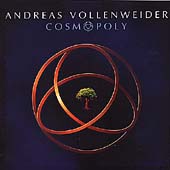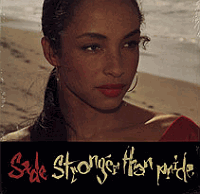Opera Audio Consonance A120 Hybrid Integrated Amp
| Opera Audio Consonance A120 Hybrid Integrated Amp |
|
Sweeeet |
|
|
|
June 2005 |

The Consonance A120 Hybrid integrated amplifier is the second component from Opera Audio of Beijing, China, that I’ve had the pleasure of reviewing since joining Stereo Times. The company offers a full line of high quality, real-world priced, and most importantly, excellent sounding components. They make designs for all audio tastes including tube, solid-state, hybrids, analog sources, digital sources, and even FM broadcasts. The very friendly and knowledgeable Stephen Monte of NAT Distribution of Southampton, PA, imports them into the U.S. The first Opera component I reviewed was the very slick Consonance Reference SACD 2.0 (July 04). I considered it a steal at its price and felt it to be the equal of significantly more expensive designs. So needless to say, I had high expectations of the A120 and I hoped to not be disappointed.
A Chinese Classic
The A120 is classic Chinese elegance. The fit-n-finish is very nice and very solid, nothing loose, no sharp corners or fragile toggle switches. On the left side of it’s ¼” thick silver aluminum faceplate is a soft-touch power button. In the center is an easy to read display that indicates the active source and volume level. On the right are a couple of large aluminum knobs for source selection and volume control. The back of the unit is just as understated with three sets of gold-plated RCA inputs, one set of balanced inputs (XLR), two sets of RCA outputs (you can use one set for a powered sub or in a bi-amp configuration), and a power cord receptacle. Opera doesn’t attempt to wow you with lights and switches and bells and whistles with this unit, yet it doesn’t lack flexibility. The remote is designed to operate the A120 and/or one of the Consonance CD players (it has buttons for Prev, Next, Play, etc.). Only the volume and mute buttons work on the A120.
A look in side of the A120 finds a chassis that is jam-packed with a rather sizable toroidal transformer and a cleanly laid out and deceptively simple looking design. A Sovtec 6H30 tube provides linestage amplification and short signal paths connect the sizable printed circuit board to the gold-plated RCA connectors.
Platters Please
I installed the A120 into a system which features my revitalized analog front-end, which consists of the legendary “The Source” turntable/Alphason tonearm/Benz Micro Ace cartridge and Clearaudio “Smart Phono” phono stage. The Electrocompaniet EMC-1 CD player, Magnum Dynalab DT-5 AM/FM Tuner, and the excellent Escalante Design Pinyon loudspeakers round out the component list. The system was wired with cables from KAS Audio and Argento.
The first cut I played was “Mr. Chow” from the Acoustic Alchemy album Red Dust and Spanish Lace [MCA]. This is a tune that neatly blends reggae and Latin musical textures. The bass notes were very well defined and were not fattened as I’ve heard them sound on some inexpensive separates that I used to own (whatever happened to Adcom anyway?). The treble was just a tad on the bright side however, a trait that served the A120 well on some of my favorite live jazz recordings such as that old audiophile standard, Jazz At The Pawnshop [Proprius].
 The A120 also did quite well even with multi-layered recordings like new-age harpist Andreas Vollenweider’s Cosmopoly[Sony Classical]. This recording is an aural workout. Vollenweider does some serious style blending between rock, jazz, and full scale classical. Throw in some interesting vocal pieces from Bobby McFerrin andMilton Nascimento and you’ve got music that can be pretty overwhelming to a system that can’t properly specify images and instruments. The A120 handled this recording very well, maintaining the musicality of the instruments and giving them the proper separation in space within the soundstage.
The A120 also did quite well even with multi-layered recordings like new-age harpist Andreas Vollenweider’s Cosmopoly[Sony Classical]. This recording is an aural workout. Vollenweider does some serious style blending between rock, jazz, and full scale classical. Throw in some interesting vocal pieces from Bobby McFerrin andMilton Nascimento and you’ve got music that can be pretty overwhelming to a system that can’t properly specify images and instruments. The A120 handled this recording very well, maintaining the musicality of the instruments and giving them the proper separation in space within the soundstage.
I also used this same recording to evaluate the bass performance of the A120. The second track, “Stella” follows a delicate flute/harp duet with a thundering intro to this huge sounding pop piece. This tune shows off Vollenweider’s splendid sense of rhythm and unparalleled musicianship. It’s not often that a harpist can get a room full of R&B lovers to bob their heads to the beat. This is due largely to the A120’s ability to control the low end and allow the listener to enjoy all of the music.
An Uncommon Comparison
Typically, I avoid making comparisons between two similarly priced components because doing so doesn’t benefit the reader unless he or she is going to be able to take those same pieces home for an evaluation before making a purchase. That just doesn’t happen. But I will, on occasion, make a comparison to my reference components if I feel there is an interesting comparison to make. In this case, I wanted to compare the tube linestage of the A120 with my Electrocompaniet EC4.7 linestage, a design that has been universally lauded for its tube-like sound and whose price alone exceeds that of the A120.
Now I’m not going to tell you that the A120 outperformed my reference system, but I will say that it showed that there is a difference between “tube” sound and “tube-like” sound, particularly at the linestage. One of the things that attracted me to the EC gear was its ability to portray some the warmth and delicacy of tubes while still maintaining the ability to drive difficult loads the way only a high-powered amp like the Nemo can.
 But the effect of the A120’s tube linestage was something that the EC system simply could not match, particularly on voices. Now vocally, Sade would never be confused with Dianna Krall, but on her (IMHO) best recording, Love Is Stronger Than Pride [Sony] she performs the title track with a sweetness that the A120 portrays faithfully. There’s a rich sensuality and soft raspiness to Sade’s voice that is addictive. The combination of natural tube warmth and that voice forced me to go through every Sade disc in my collection. When I listened to the same song through the EC I found that there was a slight loss of space around Sade’s voice. The differences were not at all unexpected though. The Consonance’s tube qualities were immediately apparent in the midrange and treble performance. The sense of air and warmth was somewhat more palpable through the Consonance than through the EC, particularly on voices and some intimate jazz recordings.
But the effect of the A120’s tube linestage was something that the EC system simply could not match, particularly on voices. Now vocally, Sade would never be confused with Dianna Krall, but on her (IMHO) best recording, Love Is Stronger Than Pride [Sony] she performs the title track with a sweetness that the A120 portrays faithfully. There’s a rich sensuality and soft raspiness to Sade’s voice that is addictive. The combination of natural tube warmth and that voice forced me to go through every Sade disc in my collection. When I listened to the same song through the EC I found that there was a slight loss of space around Sade’s voice. The differences were not at all unexpected though. The Consonance’s tube qualities were immediately apparent in the midrange and treble performance. The sense of air and warmth was somewhat more palpable through the Consonance than through the EC, particularly on voices and some intimate jazz recordings.
But the A120 is not perfect. When pushed to higher volume levels the bass does begin to lose some its tightness and soundstage depth becomes slightly compressed. But the high frequencies are extended and you never get that feeling of mid-bass over-emphasis that you can get with some less expensive designs (and some much more expensive designs for that matter). At low to moderate listening levels the stage was very wide and surprisingly deep. Spatial clues were clearly evident around the performers and the instruments. It renders a lot of detail but was neither etched nor fatiguing. I felt it played jazz and classical music equally well and found it hard to seriously criticize on any count.
Conclusion
I could live happily with this amp as the centerpiece of a smaller second system or even at times when listening to lighter fare in my main setup. In fact, it was my primary amplification for a few weeks while my Nemos were out of service. I would, and have, recommended it wholeheartedly to non-audiophile friends looking for a great sounding and reliable system that they could partner up with some nice and affordable speakers like the Mobile Fidelity OML-1 and Usher X708 (not to mention some neat little bookshelf speakers coming from Opera that will be reported on in the near future), which should give you an indication of just how much I enjoyed it.
So if you’re just getting into high-end audio and you want an amp that won’t break the bank while allowing you to get a good taste of true high-end sound (not to mention a little tube magic) then the Consonance A120 should be on your short list and you should call Stephen or track down your nearest Opera Audio dealer and hear this little gem for yourself. In terms of quality, sonics, flexibility, and price, I think it’s an audio “best buy” and hard to beat for under $2,000. Highly recommended.
Dave Thomas
____________
Specifications:
Power output: 90W + 90W at 8 Ohms ;
Minimum load: 4 ohms speakers can be connected;
Input Sources: 4 selectable inputs switched by gold plated relays
Input Terminals: Gold plated Phono/RCA unbalanced and gold plated XLR balanced
Output Terminals: One set of gold plated speaker terminals each channel
Line level Outputs: Gold plated Phono/RCA unbalanced pre out
Frequency response: Less than +/- 0.1 dB deviation 20Hz-80kHz
Phase response: Less than 2 degrees deviation 20Hz-80kHz
Signal-to-noise ratio: More than 100dB
Crosstalk: Less than -100dB
Distortion: Less than 0.04% @ 20W 8 0hms
Inter-modulation: Less than 0.01% (19kHz + 20kHz)
Damping factor: More than 500
Vacuum tube: Sovtek 6H30 x1
Remote Control: RC-5 compatible IR system 36kHz modulation
Dimensions: 8cm x 43cm x 32cm (HxWxD), 15kg shipment weight.
Price: $1,350
Address:
Opera Audio Co., Ltd.
C-1501, Building No.9 Kingdom Garden, Xiaoxitian
Haidian District, Beijing, China
Phone: 86 10 62220935
Fax: 86 10 62220935
Email: klep@public.bta.net.cn
Website: http://www.operaudio.com
Nat Distribution (US Importer/Distributor)
650 Cedarbrook Road
Southampton, PA 18966
Phone: 215-953-9099
Email: info@natdistribution.com
Website: www.natdistribution.com
![]()
Don’t forget to bookmark us! (CTRL-SHFT-D)
Stereo Times Masthead
Publisher/Founder
Clement Perry
Editor
Dave Thomas
Senior Editors
Frank Alles, Mike Girardi, Russell Lichter, Terry London, Moreno Mitchell, Paul Szabady, Bill Wells, Mike Wright, and Stephen Yan,
Current Contributors
David Abramson, Tim Barrall, Dave Allison, Ron Cook, Lewis Dardick, John Hoffman, Dan Secula, Don Shaulis, Greg Simmons, Eric Teh, Greg Voth, Richard Willie, Ed Van Winkle, Rob Dockery, Richard Doron, and Daveed Turek
Site Management Clement Perry
Ad Designer: Martin Perry





Be the first to comment on: Opera Audio Consonance A120 Hybrid Integrated Amp